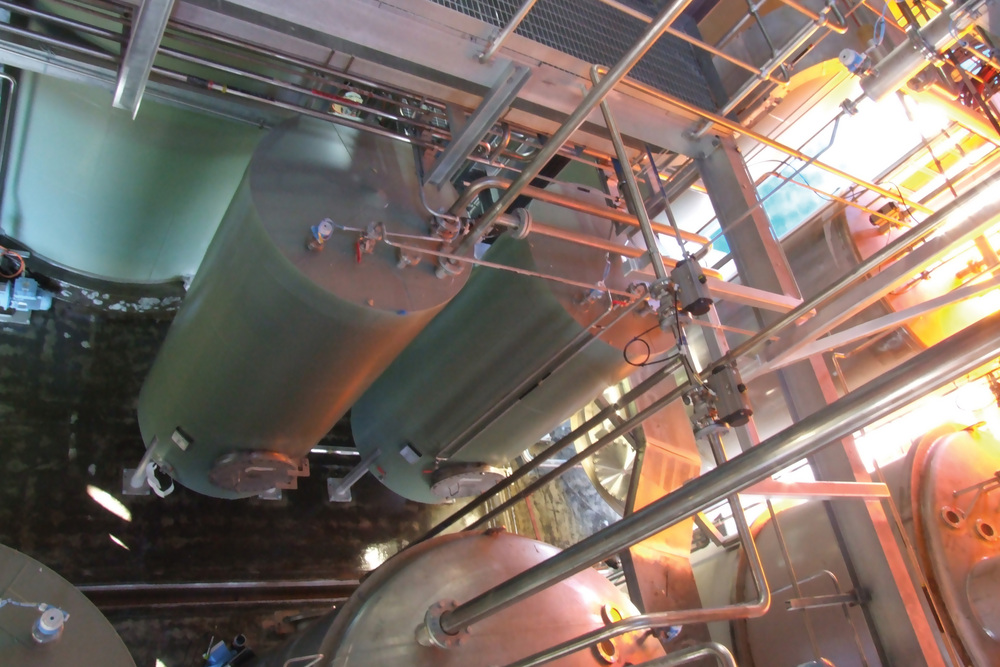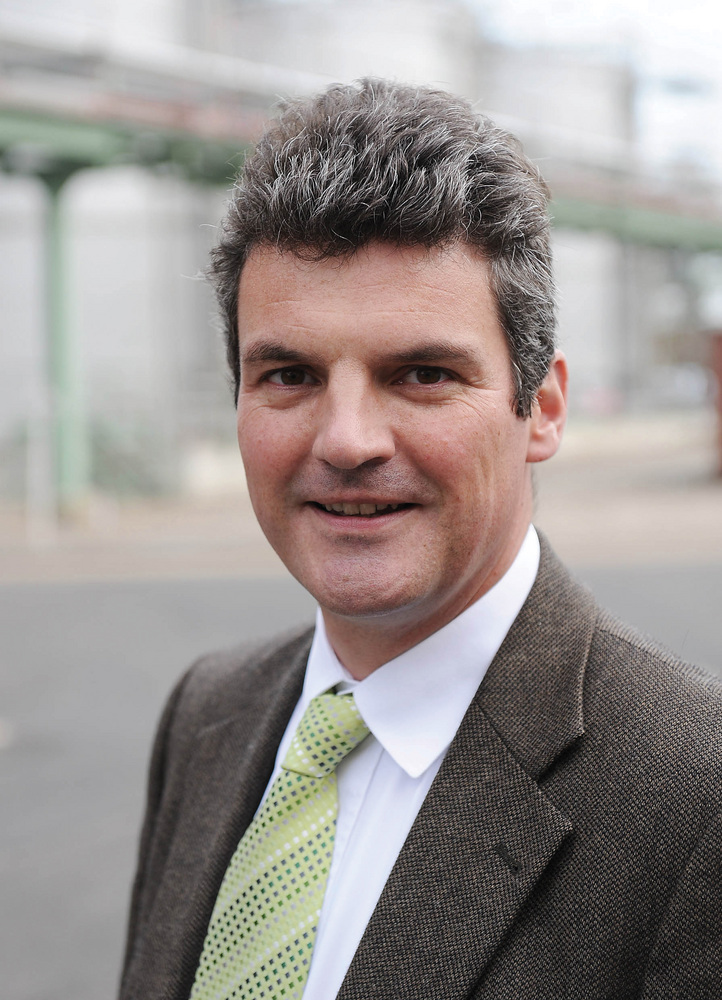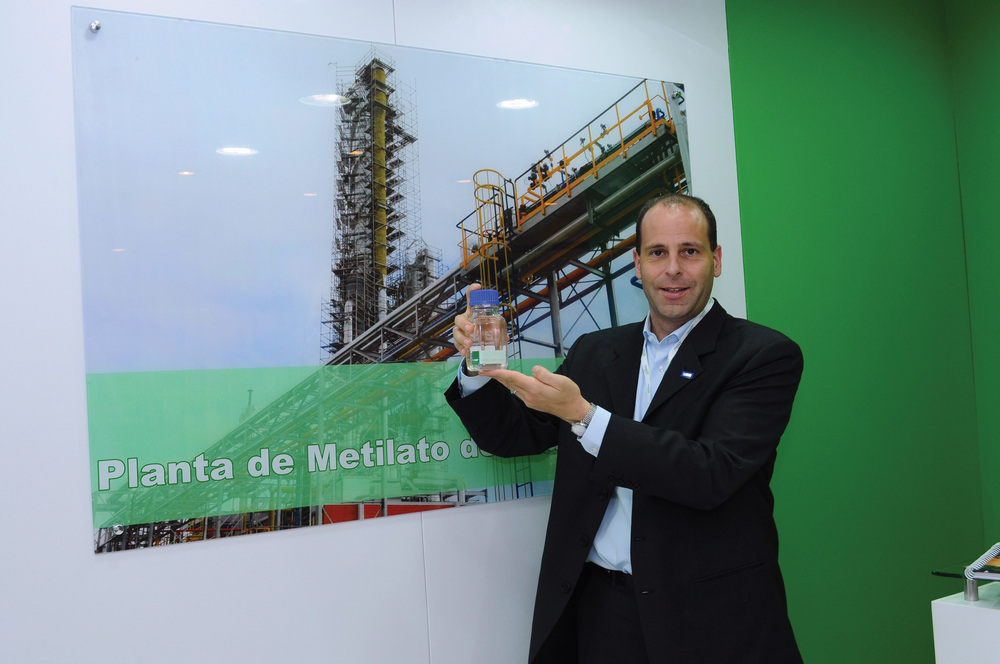Catalyzing Biodiesel Growth




PHOTO: BDI-BIOENERGY INTERNATIONAL AG
February 28, 2012
BY Bryan Sims
Catalysts play an important role in the overall profitability of a biodiesel production enterprise. Minimizing catalyst use, particularly homogenous catalysts, while simultaneously maximizing product quality and process yield is a pervasive challenge that every biodiesel producer encounters daily because, after all, single digit differences in yield can determine whether margins are positive or negative.
Among the most common and reliable catalysts for traditional transesterification of biodiesel, one that has supported the steady production volume increases over the past decade, is the homogenous, ready-to-use base catalysts of sodium and potassium methylate. Some smaller plants and many backyard brewers still prepare catalyst themselves by mixing sodium or potassium hydroxide (caustic soda or potash, respectively) with methanol, a practice that was more common years ago, but today the homogeneous catalyst of choice in the industry today is ready-to-use sodium methylate. Biodiesel producers tout the benefits of using sodium methylate as a catalyst—either in its solid crystal state or in a solution with methanol—including increased biodiesel yield, lower purification costs and more consistent quality.
Nearly all biodiesel technology providers and design/build firms, such as Austria-based BDI-BioEnergy International AG, offer process technologies and plant designs based on the utilization of ready-to-use homogeneous catalysts. Out of the 31 biodiesel plants BDI-BioEnergy has built globally, 26 of them use a proven homogenous potassium-based catalyst after a conventional esterification step to treat feedstocks with higher free fatty acids (FFA). BDI-BioEnergy’s business development manager for North America, Klaus Ruhmer, says potassium-based catalysts offer key advantages over the sodium counterpart, particularly for feedstocks up to 20 percent FFA content, including the ability to handle remaining FFAs, better settling behavior, and the ability to separate soaps and recover FFAs from glycerin for further yield increases, to name a few.
“For potassium-based catalyst processes, we dose according to feedstock parameters for optimal process performance,” Ruhmer tells Biodiesel Magazine. “Some of BDI’s key intellectual property revolves around the optimization of all these aspects with the overall effect of achieving the highest possible yield at the lowest cost possible.”
A ready-to-use sodium methylate solution may be the predominantly used catalyst by a majority of biodiesel producers today, but this wasn’t always the case, particularly during the industry’s period of breakneck growth five to six years ago in the U.S. when a majority of small-scale producers like Patriot BioDiesel LLC, a 6.5 MMgy multifeedstock facility in Greensboro, N.C., relied heavily on manually mixing caustic soda or potash with methanol itself in order to come up with the best possible combination to react with a variety of virgin and high-FFA feedstocks. After several years of trial and error figuring out the optimal blend of sodium and potassium hydroxide mixtures per-batch, per-weight with methanol, President Gabe Neeriemer anecdotally tells Biodiesel Magazine that his company settled on a 30 percent sodium methylate solution rather than a 25 percent solution. “It’s more cost-effective for us,” he says, adding the reactivity with using a 30 percent sodium methoxide (SMO) solution is much higher for his process.
“There’s something about that initial hit with a really strong caustic that seems to drive high FFA oil to react a little bit more,” Neeriemer says. “After a couple millions of gallons of biodiesel, you start to notice these little things.”
Advertisement
Fortunately, at a time when biodiesel producers like Patriot BioDiesel were busy customizing recipes of “home-grown” catalyst solutions and mixtures with methanol—which spurred handling and safety issues as a result—major global chemical companies like BASF, Dupont, SMOTEC Plus, Evonik Industries AG and others have honed in on becoming enablers for the industry, each offering their own unique manufacturing processes for catalysts, business acumen and global presence to bear.
Improving the Base
While sodium or potassium methylate can be considered the active species in the catalytic cycle of the transesterification process, they cannot, however, be improved chemically with the target of a quicker or more complete conversion or a higher selectivity, according to Johannes Ruwwe, director of strategic development advanced intermediates for long-time biodiesel catalyst manufacturer and supplier Evonik. The company currently owns and operates a sodium methylate production facility in Germany and a 60,000 metric ton facility in Mobile, Ala. In September, Evonik broke ground on another sodium methylate facility in Puerto General San Martin, Argentina. “Alkoxides are and will be the industry standard,” Ruwwe says. “This is reflected in the fact that alkoxides are currently used already and allow almost perfect biodiesel yields.”
Evonik’s approach to improving the use of these catalysts, according to Ruwwe, is to develop tailor-made recipe guidelines for specific feedstocks or groups of feedstocks that include optimizing temperature or residence time parameters and, particularly, the refining steps prior to transesterification. “We have accomplished this and it is ongoing,” Ruwwe says. “Evonik’s research and development has evaluated and patented methods to improve the subsequent phase separation to remove the liberated glycerol, but this research is in the early stages.”
While demand for homogenous catalyst is attributed to more of a function of run rate rather than the composition of feedstock, sales of homogenous catalysts such as sodium methylate haven’t been dramatically affected with the industry’s progressive movement toward multifeedstock processing, according to German chemical company BASF. This is because catalyst manufacturers and suppliers like BASF are recognizing the trend over the past several years from biodiesel producers moving away from using caustic soda and potash to using more ready-to-use methylate catalysts due to achieving higher yields. As a result, catalyst suppliers have become more responsive to their customers’ needs supplying either sodium or potassium methylate as their feedstock needs dictate, says Patrick Amrhein, global marketing manager of standard alcoholates for BASF, which operates a sodium methylate production plant in Ludwigshafen, Germany, and a newly inaugurated second facility in Guaratingueta, Brazil.
“We see the few remaining plants using hydroxide catalysts switching to methylate catalysts,” Amrhein says. “With the increased use of alternate feedstocks, we expect more [biodiesel] plants to evaluate potassium methylate as an alternative to sodium methylate. The industry has moved from 25 percent to 30 percent sodium methylate because of reduced transportation and storage costs, and we see this trend continuing.”
Advertisement
For other catalyst manufacturers such as Germany-based catalyst manufacturer SMOTEC Plus, the production of sodium methylate has evolved over the years to conform to stringent quality parameters associated with serving multiple markets, including the biodiesel industry. According to global director and partner, Prasad Devineni, the company uses caustic soda and methanol rather than mercury-cell based chlorine and sodium metal to produce its sodium methylate at its 60,000 ton sodium methylate facility in Dammam, Saudi Arabia. This is because, in addition to supplying sodium methylate to the biodiesel industry, SMOTEC Plus also produces and supplies the versatile compound to the food, pharmaceutical and nutraceutical markets.
“The production process offers some flexibility compared to the SMOs derived from the chlorine-based process, which is a very expensive process,” Devineni says, “and you need huge economies of scale. Unless you’re in the chlorine [supply] chain, you can’t get the feedstock.” He anticipates supplying additional volumes of sodium methylate this year to meet anticipated global demand growth for biodiesel markets.
Augmenting Acid Esterification
Homogenous methylate-based catalysts are best suited for treating biodiesel feedstocks that are low in FFAs, but convention says to treat high-FFA feedstocks, the use of homogenous acid catalysts such as sulfuric acid (or sometimes hydrochloric acid) is required during an esterification step. Failing to treat high-FFA feedstocks with an acid can result in unwanted quantities of soaps, water, and more methanol in the final product than desired. Raj Mosali, president of Ohio-based Jatrodiesel, says, “Typically the higher the FFA going into your transesterification process, the more SMO you need to use, which can range anywhere between 1.5 and 4 percent. But the more SMO used, the more soap you make, so you need to be aware of that. The less SMO you use, the less chance you have of making soap, which decreases further polishing techniques on the backend.”
Some of the leading chemical suppliers are introducing novel acid technologies to the biodiesel market to make up for the shortcomings associated with using conventional sulfuric acid. For example, BASF’s latest product offering, trademarked Lutropure, offers a modern alternative to standard acid catalysts. According to Amrhein, BASF’s Lutropure is a nonoxidizing, pure methanesulfonic acid catalyst that augments the acid pretreatment step by providing better phase separation, easier handling and less corrosivity compared to sulfuric acid, resulting in higher yield and less maintenance costs.
“Users of BASF’s Lutropure catalyst system significantly reduce such problems and achieve a light-colored, in-spec biodiesel with higher yield and shorter process times,” Amrhein says. Unlike para-toluenesulfonic acid, Lutropure is a naturally occurring, readily biodegradable acid. “These properties of Lutropure are also advantageous in the neutralization step of base catalyzed transesterification processes,” Amrhein notes.
Not only are global chemical suppliers like BASF introducing novel acid technologies to the biodiesel industry, so too are prominent process technology and design/build firms such as BDI-BioEnergy, which offers its proprietary RepCat technology to current and would-be biodiesel producing clients. Depending on the plant configuration, BDI-BioEnergy’s RepCat can be utilized for esterification only or for both esterification and transesterification in a single step.
“Although an important one, we view the catalyst system as only one of many aspects of a modern biodiesel process,” Ruhmer says. “Implementing an overall process that specifically responds to the characteristics of the catalyst system is the challenge one must overcome. A specific catalyst should never be looked at as a ‘one-size-fits-all’ isolated solution to a biodiesel process.”
Author: Bryan Sims
Associate Editor, Biodiesel Magazine
(701) 738-4974
bsims@bbiinternational.com
Upcoming Events





